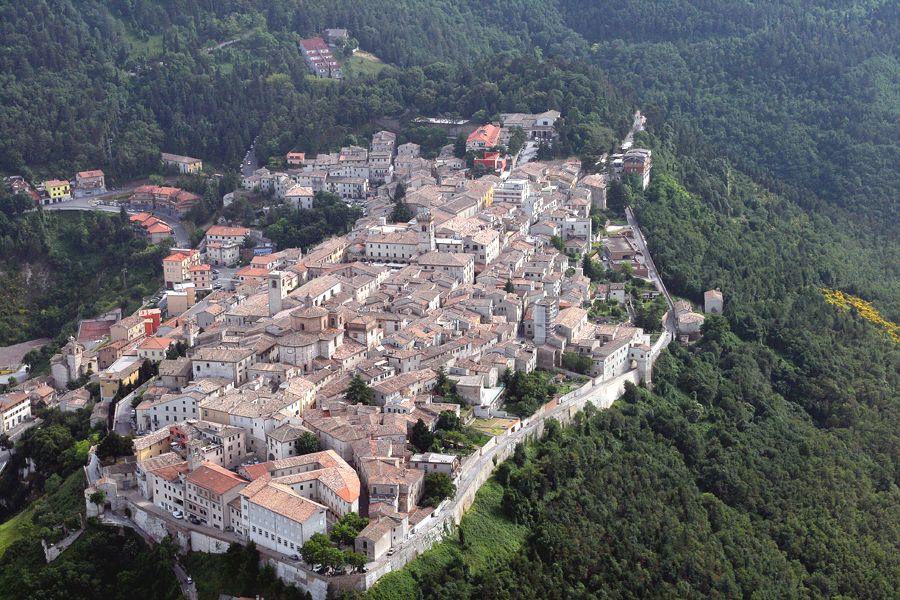Arcevia’s tour can begin from the mighty city walls (XIII-XVI century), which can be reached in several places, with some circular towers, two polygonal towers, and four of the five original doors. Near Porta del Sasso there is the church of St. Francesco di Paola (1728-’30), the baroque masterpiece of the local architect Arcangelo Vici; you can reach the most important street of Corso Mazzini, called the ‘500’ main street, where you can see the most important buildings of the city.
At the beginning, moving from east to west, the Duchess Palace (first half of the 17th century) is on the right, so called because this was the summer residence of Livia della Rovere; faces the apse and the side of the most important religious monument of the city: the Collegiate of San Medardo.
From the church, you reach right onto Ramazzani until you reach Fiorenzuola’s alley; From here you go down to Via Angelo Rocca, where there is the church of St. Maria del Soccorso, built in the XVI century by the Augustinian Fathers, where various works of high artistic value are preserved. Returning back to Corso Mazzini, and continuing towards the central square, you will see on the left the wonderful facade of Palazzo Anselmi (XV-XIX century) and immediately after the Complex of St. Francesco, attested by the end of the thirteenth century, when the Franciscans decided to build their convent within the historic center.
Continuing, you reach Piazza Garibaldi, the heart of the historic center, where you can see the town hall, one of the oldest in the region (attested by 1259); continuing on the right, here is Palazzo Mannelli then Pianetti, a splendid late Renaissance building, one of the most beautiful in the province. A few meters further, on the other side of the road, stands the Palazzo dei Priori (XIV century), with a revolted room of that time which is annexed to the Misa Municipal Theater (XVII century, restored between 1840 and 1845). Finally, on the same side of the course, there are the church of S. Agata and the church of St. John the Baptist.
You may also be interested in: https://www.fuoriporta.org/ricetta/le-fave-dei-morti-dalle-marche/


